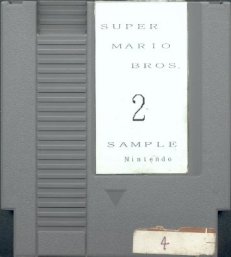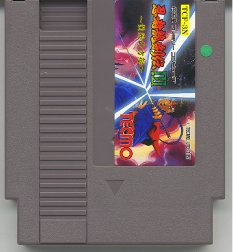Have you ever wondered how video game magazines got their hands on the latest-released games, even though they had lead times of several weeks? If they were a magazine like Game Players, GamePro or some other mag I had a thing against, they probably made up all the facts then went out for some beer with Slasher Quan or whoever. However, most normal magazines asked game companies for demo carts like these, so they have a game to write a useful review with. How do these carts go from the hands of game companies to collectors, anyway? It's a tough journey, and part of the reason why certain people covet protos so much. (Technically speaking, prototype carts are what the companies' coders use to test games, and demo carts are what are given to magazines for reviews, but collectors call them both prototypes.) Many fall out of the industry when a person leaves a game company or magazine and decides to take a few souvenirs with him, or a guy inhouse sells them to a private collector. Protos are still technically the property of the companies that issued them, but thanks to the lax regulation of protos by companies and mags, more and more of these jewels are being discovered all the time. Some companies, especially Nintendo, do have security measures with their protos that border on the extreme. When Nintendo sends sample carts of their new games (they called them "packets" and assigned a number to each one... for example, NES EarthBound was packet 23) to magazines, they don't just send the cart; they send a representative who carries the game bolted inside the game system, and the rep sits there as reviewers check out the game. Most third parties, however, simply ask the mags to return the carts by some specified date and don't care too much if they never see it again, and they end up getting thrown out... or taken by private parties, so to speak.
Prototypes achieve their greatest value, though, when they've got unreleased games inside. You probably remember the NES EarthBound furor of a few months ago - while I still have some questions about the origin of that cart, there's no doubt that it exists. Other games, like Squashed and California Raisins, have already been saved from the trash bin by collectors. In general, if a game got a review in a magazine it probably exists in a full version. And if the 2600 scene is any indication, all we need to do is wait and protos of most unreleased games - known and unknown - will eventually fly out of the woodwork at us. If you have any prototypes of games - released or unreleased, complete or non - lemme know (for informational reasons only)! |

